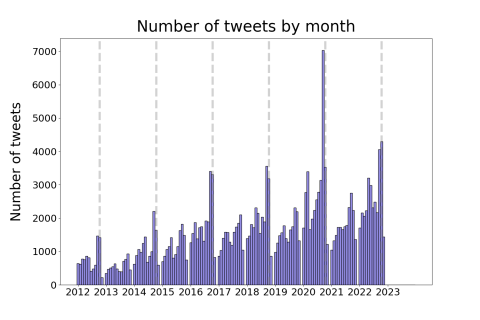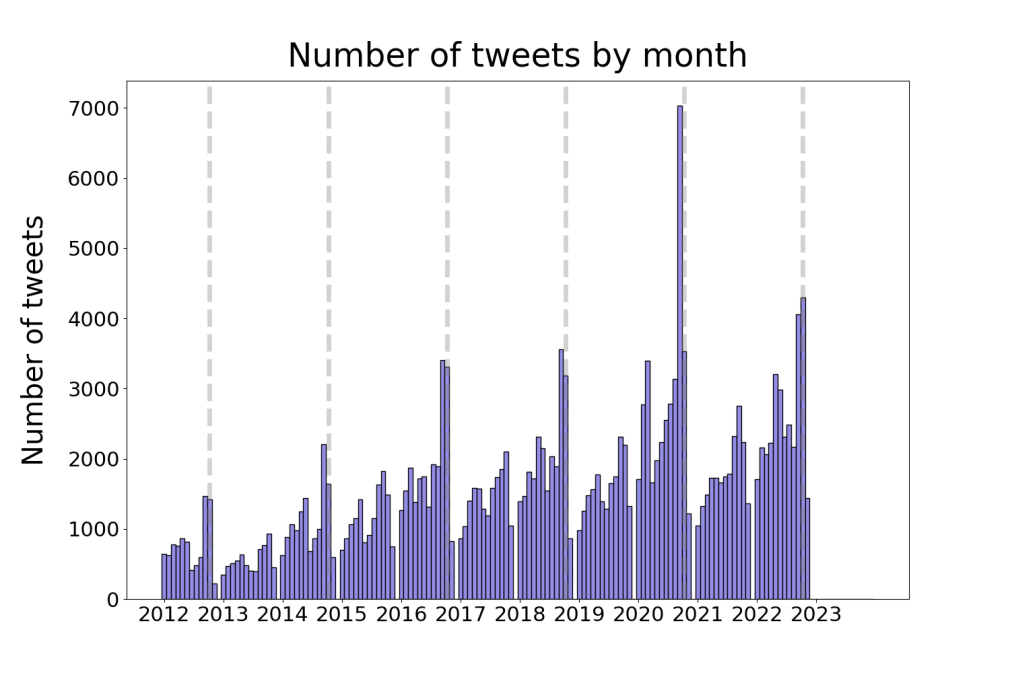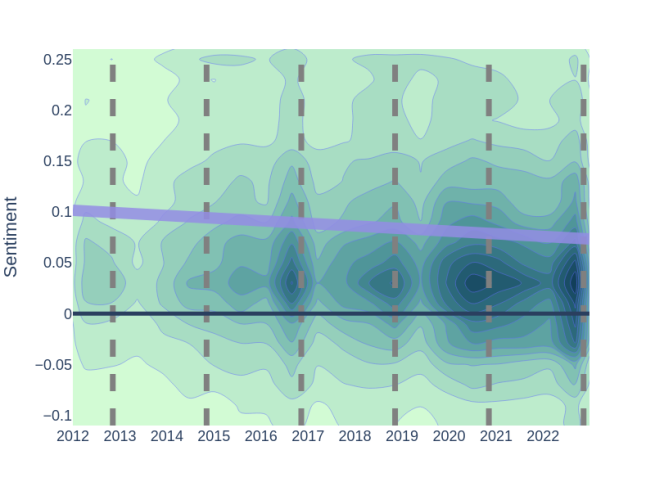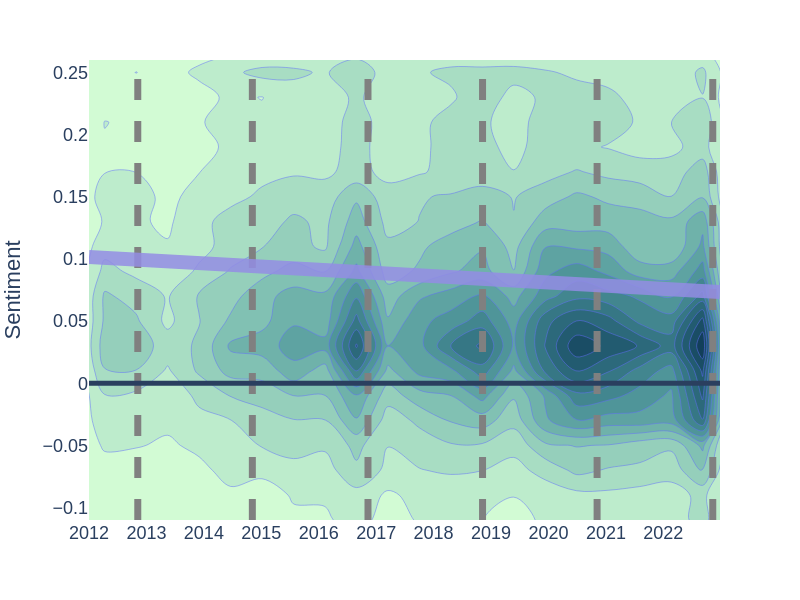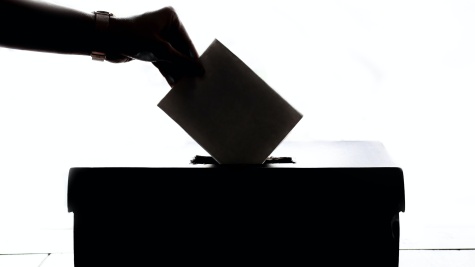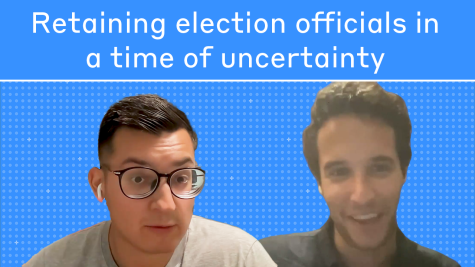Online Hostility Towards Local Election Officials Surged in 2020
Since the 2020 election, the lives of election officials across the nation have changed dramatically. As a result of former President Donald Trump's abrasive tirades against the integrity of American elections, many election officials have experienced an influx of violent and even criminal threats.
In my new working paper co-authored with Samuel Baltz, Mara Suttmann-Lea, Lia Merivaki, and Charles Stewart III, titled “Online hostility towards local election officials surged in 2020,” we ask whether the 2020 election was a turning point for local election officials (LEOs) on social media. We find that not only did election officials tweet significantly more in the months leading up to the 2020 election, negativity and fraud-related discussions surged in their replies around the election, and for many officials, this negativity persisted well into the 2022 midterm season.
While social media attacks in general are nothing new, this negativity towards LEOs on social media is particularly worrying. In our highly decentralized system, election officials carry democracy on their backs– any uptick in threats against them is of immediate concern. Building on our previous research regarding negativity against state election officials on Twitter, we focus on the content and sentiment of responses to local election officials' tweets over the last decade, from 2012 to the end of 2022.
About Our Research
We measure the extent of negative rhetoric that local election officials experience on Twitter in four steps. First, we collected all of the tweets that local election officials posted over the span of a decade, as well as all of the replies to those tweets. Second, we counted the number of times that certain keywords related to fraud or accusations of wrongdoing appeared in the replies. Third, we estimated and compared the sentiment of the replies to officials' tweets. Finally, we estimated the ideologies of a sample of the repliers to understand if negative replies to tweets are more likely to come from conservative or liberal-leaning users on Twitter.
We completed this analysis for all of the active Twitter accounts for local jurisdictions across the nation. In total, our corpus has 264,905 tweets made by officials and 133,199 replies to those tweets, which come from 154 different accounts. In a separate research paper, Mara Suttmann-Lea and Lia Merivaki underwent the meticulous task of identifying all of the active Twitter accounts for local officials across the nation.
What We’ve Found
From the data we collected, we find that the incidence of tweets generated by local officials has grown over time. That is to say, while local election officials have been on Twitter for the better part of a decade, the 2020 election was a turning point for their social media presence: they suddenly started tweeting much more than they ever had before.
Below, figure 1a, we can see that by 2013 nearly half of the accounts were tweeting and by 2018 nearly all of the current LEO Twitter accounts had been created. In figure 1b, we can see the structured activity cycle of LEO Twitter activity in a given election cycle, with more tweets in October and November of election years. However, in October 2020, it is evident that LEOs are tweeting far more, with more than double the amount of tweets seen in that month than during any month prior.
When analyzing sentiment of the replies to their tweets, we find increasingly negative replies over time, as seen in the figure below. This figure delineates when, over the course of the entire corpus and the entire decade, replies to officials were most frequent (as denoted by darker regions on the plot) as well as showing when replies were most negative (the y-axis value). As we can see based on the Ordinary Least Squares (OLS) line fit to the plot, there are more replies over time and while replies are still on average more positive than they are negative they are growing far more negative over time.
While it is difficult to measure the exact degree of negativity, it is clear that in some places, like Maricopa County, the replies are getting far nastier. Keyword usage is concentrated in some contentious jurisdictions; not every jurisdiction receives allegations of fraud, but several of them received a noticeable uptick after the 2020 election. In investigating some examples of a high concentration of negative replies, we observe that most of that negativity comes from conservative users.
Specifically, we analyzed tweets from election official accounts in Maricopa County, Arizona and New York City, New York that generated negative replies from conservatives. The tweets that sparked such furor were those that discussed aspects of election administration that have become contentious issues. While logistical details such as ballot drop box locations and the certification of results were previously mundane (and somewhat obscure for the general public), they have become hot-button issues since 2020.
We’ve included an example of this finding below. This plot shows the average sentiment of tweets that were sent as replies to posts from Maricopa County’s Election Board account, @MaricopaVote, from the beginning of 2020 (when Maricopa County’s official Twitter account was first created), through the end of 2022. The points on the plot have three elements and should be read as follows:
- the y-axis represents the sentiment of the replies;
- the size of those points indicates the number of replies to each given Tweet; and
- the color of the point represents the repliers’ average ideologies.
We have also highlighted key election dates.
Around the time of the 2020 election, Maricopa County’s tweets received many more replies than the account ever had in the past. While the number of replies around the time of the 2020 election increases, most of them are largely positive, and largely from liberal users. As time progresses towards the 2022 primary and midterm elections, however, replies grow more negative and are predominantly from conservative accounts. During and after Election Day 2022, the negativity from conservatives is overwhelming.
In previous studies, we found that online rhetoric towards state-level election officials has become harsher over time; in this work, we wanted to explore whether that same trend was affecting local election officials as well. Our results point to a very similar pattern. Like their statewide counterparts, local election officials are not exempt from growing negativity and increasing allegations of fraud on social media.
If local election officials continue to experience death threats, allegations of fraud, and blatant negativity such as what I have detailed here, whether that sentiment is conveyed in person or online, we can expect them to continue to flee these essential jobs. Ultimately, the dearth of expertise and experience of administering elections in their place may imperil the continuation of safe and fair elections in localities nationwide.
To read more about our findings, check out the full paper here.

